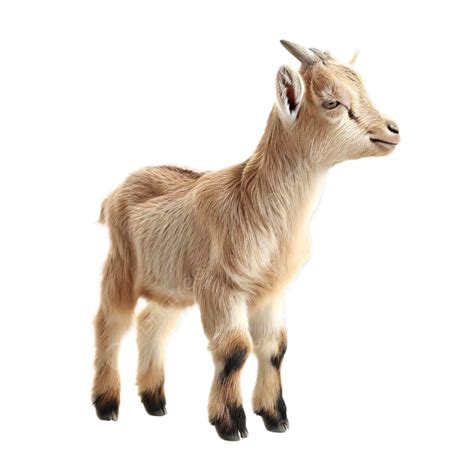
A fed-up feline in the United Kingdom has become an internet sensation after intervening to stop its owner’s sheep from escaping their enclosure, effectively enforcing order and earning the moniker “Cat Shepherd.” The cat, named Jessi, has been lauded for her unexpected herding skills, providing a much-needed assist to her owner who was struggling to contain the flock.
A domestic cat in Aberdeenshire, Scotland, demonstrated remarkable herding abilities when she took it upon herself to prevent a flock of sheep from escaping their pen, proving that cats can be more than just house pets. Jessi, a black and white feline, intervened when her owner, a local shepherd, was struggling to contain the sheep, showcasing an unexpected talent for animal management. The incident, captured on video and shared widely on social media platforms, quickly went viral, turning Jessi into an internet sensation and garnering praise for her proactive and helpful behavior.
According to the original source, Jessi’s owner was having difficulty keeping the sheep within their designated area, a common challenge for shepherds. The sheep, seemingly intent on exploring beyond their confines, were pushing against the fence and attempting to break free. It was at this point that Jessi stepped in, taking on the role of an unlikely herder. She strategically positioned herself near the fence, effectively blocking the sheep’s escape route and using her presence to deter them from further attempts.
“She’s a great help,” Jessi’s owner stated in an interview about her feline assistant. “Normally, I would have to go and round them up myself, but Jessi just sorts them out.”
The video footage shows Jessi calmly and confidently patrolling the fence line, preventing the sheep from squeezing through any gaps. Her focused demeanor and assertive movements were enough to keep the flock in check, allowing her owner to address other tasks without constantly worrying about the sheep’s whereabouts. This unexpected display of herding prowess has surprised many, challenging the common perception of cats as primarily independent and self-serving animals. Jessi’s actions demonstrate a level of intelligence, awareness, and willingness to cooperate that is rarely attributed to felines.
Social media users have expressed their admiration for Jessi, with many commenting on her intelligence, dedication, and natural herding instincts. The video has been shared thousands of times across various platforms, accompanied by messages of appreciation and amusement. Some users have jokingly suggested that Jessi deserves a raise, while others have praised her owner for recognizing and nurturing her unique talent. The incident has also sparked a broader discussion about the potential roles that animals can play in assisting humans with various tasks, highlighting the importance of recognizing and valuing their contributions.
The cat’s owner initially acquired Jessi as a household pet but soon discovered her affinity for farm animals. Jessi would often accompany the owner on walks around the farm, displaying a keen interest in the sheep and other livestock. It was during one of these walks that Jessi’s herding abilities were first observed, leading to her becoming an active participant in the daily farm routines. Her owner has since encouraged Jessi’s herding behavior, recognizing the practical benefits of her assistance and the positive impact she has on the overall management of the farm.
Jessi’s story underscores the adaptability and intelligence of domestic animals, suggesting that they are capable of far more than many people realize. Her ability to learn and apply her skills in a practical setting demonstrates a level of cognitive flexibility that is often underestimated in non-working animals. The incident also highlights the importance of observing and understanding animal behavior, as it can reveal hidden talents and potential contributions. By recognizing and nurturing Jessi’s herding instincts, her owner has not only gained a valuable assistant but has also fostered a stronger bond with his feline companion.
Beyond the immediate benefits of Jessi’s herding abilities, her story has a broader significance in terms of promoting animal welfare and responsible pet ownership. By showcasing the positive impact that animals can have on human lives, the incident encourages people to treat their pets with respect and appreciation. It also highlights the importance of providing animals with opportunities to express their natural behaviors and contribute to their environment, which can lead to improved well-being and a stronger sense of purpose.
Furthermore, Jessi’s story serves as a reminder that animals are not simply commodities or possessions but rather sentient beings with their own unique personalities, talents, and needs. By recognizing and valuing these qualities, we can create a more compassionate and sustainable relationship with the animal kingdom. The incident also underscores the importance of responsible breeding practices, which aim to produce animals that are well-suited for their intended roles and capable of living healthy, fulfilling lives.
In conclusion, Jessi’s unexpected herding abilities have not only provided practical assistance to her owner but have also captured the hearts of people around the world. Her story serves as a testament to the intelligence, adaptability, and potential of domestic animals, highlighting the importance of recognizing and valuing their contributions. By promoting animal welfare and responsible pet ownership, Jessi’s story has the power to inspire positive change and foster a more compassionate relationship between humans and animals. The “Cat Shepherd” has undoubtedly earned her place as an internet sensation and a valuable member of the Aberdeenshire farm community.
Expanding on the Details and Context:
The narrative of Jessi, the herding cat, resonates so strongly because it disrupts preconceived notions about feline behavior and capabilities. Cats, often stereotyped as aloof and self-centered, are rarely associated with cooperative work, especially in a rural, agricultural setting. The inherent image of a shepherd is almost always accompanied by a dog, specifically breeds like Border Collies, German Shepherds, or Australian Shepherds, which have been selectively bred for generations to possess the instincts and physical attributes necessary for herding livestock. The idea of a cat fulfilling this role is not only unexpected but almost comical, making Jessi’s success all the more remarkable.
The location of Jessi’s farm, Aberdeenshire, Scotland, adds another layer to the story. Scotland’s agricultural landscape, particularly in the Highlands and other rural areas, is steeped in tradition and reliant on the skills of both shepherds and their canine companions. Sheep farming is a crucial part of the Scottish economy and cultural heritage, so any disruption or innovation in this time-honored practice is bound to attract attention. Jessi’s presence challenges the traditional image of sheep farming and suggests that there might be room for alternative approaches, even if they come in the form of a seemingly unlikely feline.
Moreover, the manner in which Jessi’s story spread – through social media – is indicative of the modern world’s fascination with animal antics. Viral videos of pets performing unexpected tasks have become a staple of online entertainment, often generating millions of views and shares. These videos tap into a deep-seated human desire to connect with animals and to marvel at their intelligence and adaptability. In Jessi’s case, the visual impact of a cat calmly and effectively controlling a flock of sheep is inherently appealing and easily shareable, contributing to her rapid rise to internet fame.
The owner’s role in this story is also significant. By recognizing and encouraging Jessi’s herding instincts, he demonstrated a willingness to embrace unconventional approaches and to value the unique contributions of his pet. This open-mindedness not only benefited the farm but also fostered a stronger bond with Jessi, reinforcing the idea that animals are capable of enriching human lives in unexpected ways. His quote, “She’s a great help. Normally, I would have to go and round them up myself, but Jessi just sorts them out,” highlights the tangible benefits of Jessi’s assistance and underscores the importance of recognizing and appreciating animal talents.
Jessi’s story also raises questions about the potential for other animals to contribute to agricultural practices. While dogs have long been the primary herding animals, there may be other species or breeds that possess untapped potential in this area. Jessi’s success suggests that it may be worthwhile to explore alternative approaches to animal management and to consider the possibility that animals traditionally viewed as pets could play a more active role in agricultural settings.
Furthermore, the story of Jessi can be interpreted as a metaphor for the broader trend of humans seeking to connect with nature and to find new ways to coexist with animals. As urbanization continues to spread and as people become increasingly disconnected from the natural world, there is a growing desire to reconnect with animals and to appreciate their unique qualities. Jessi’s story taps into this desire, offering a heartwarming example of how animals can enrich human lives and contribute to the well-being of society.
In addition, the incident brings to light the underestimation of feline intelligence. Often perceived as independent and less trainable compared to dogs, Jessi’s herding skills challenge this stereotype. Her ability to understand the task at hand, position herself strategically, and effectively deter the sheep demonstrates a high level of cognitive function. This challenges the conventional understanding of feline capabilities and opens up discussions about the potential for cats to be trained for various tasks, moving beyond their traditional roles as household companions.
The implications of Jessi’s behavior extend to animal behavior studies. Her actions provide a real-world example of animal adaptability and the potential for unexpected skills to emerge in domestic animals. Researchers can use Jessi’s case to further investigate the cognitive processes involved in herding behavior and to understand how environmental factors and individual personalities can influence animal skills.
Looking at the economic aspect, the story of Jessi has undoubtedly brought positive attention to the farm in Aberdeenshire. The viral video and subsequent media coverage have likely increased awareness of the region and its agricultural practices. This could potentially lead to increased tourism or interest in the farm’s products, providing an unexpected economic boost.
Finally, Jessi’s story serves as a reminder of the importance of responsible animal ownership. By providing Jessi with a stimulating environment and recognizing her unique talents, her owner has fostered a strong bond and created a mutually beneficial relationship. This highlights the importance of understanding and meeting the needs of our pets, ensuring that they have opportunities to express their natural behaviors and contribute to their surroundings.
Frequently Asked Questions (FAQ)
1. How did Jessi, the cat, start herding sheep?
Jessi’s herding behavior was discovered organically. Initially a household pet, she would accompany her owner on walks around the farm and displayed a keen interest in the sheep. Over time, she began to position herself strategically to prevent the sheep from escaping, demonstrating a natural herding instinct that her owner encouraged.
2. Is it common for cats to herd sheep?
No, it is very uncommon. Herding is typically associated with dog breeds specifically bred for the purpose, such as Border Collies. Jessi’s case is exceptional and has garnered attention precisely because it defies typical expectations of feline behavior.
3. What benefits does Jessi’s herding provide to her owner?
Jessi’s herding significantly reduces the owner’s workload. As stated by the owner, Jessi “just sorts them out,” eliminating the need for him to personally round up the sheep, saving time and effort.
4. Has Jessi received any formal training for herding?
According to the information available, Jessi has not received any formal training. Her herding abilities appear to be instinctive, with her owner simply encouraging and allowing her to practice her natural behavior.
5. How has Jessi’s story been received by the public?
Jessi’s story has been overwhelmingly positive, with social media users praising her intelligence, dedication, and unique talent. The video of her herding has gone viral, generating widespread admiration and amusement.
More In-Depth Analysis:
The “Cat Shepherd” narrative also delves into the broader understanding of animal cognition and challenges conventional perceptions of animal roles in society. Traditionally, certain animals, particularly dogs, are assigned specific roles such as herding, guarding, or assisting individuals with disabilities. Cats, on the other hand, are often relegated to the role of companions, valued for their independence and low-maintenance nature. Jessi’s story disrupts this established hierarchy by demonstrating that cats are capable of much more than simply being house pets.
Her actions imply a sophisticated understanding of spatial relationships, animal behavior, and the desired outcome (keeping the sheep contained). It requires her to anticipate the sheep’s movements, position herself strategically to block their escape routes, and use her presence to deter them from further attempts. This level of cognitive complexity suggests that cats possess a higher degree of intelligence and adaptability than is commonly recognized.
Furthermore, Jessi’s story raises questions about the limitations of human understanding of animal behavior. For centuries, humans have relied on selective breeding and training to shape animal behavior, often focusing on specific traits or skills that are deemed desirable. However, Jessi’s spontaneous herding suggests that animals may possess latent talents and abilities that are not readily apparent and that can emerge in unexpected contexts. This underscores the importance of observing animals carefully, providing them with opportunities to express their natural behaviors, and recognizing the potential for them to surprise us.
The incident also highlights the role of environmental factors in shaping animal behavior. Jessi’s exposure to sheep and her owner’s encouragement likely played a significant role in the development of her herding skills. Had she been raised in a purely domestic environment, she may never have had the opportunity to discover or develop this talent. This suggests that providing animals with stimulating environments and opportunities for exploration can unlock hidden potential and enhance their overall well-being.
In addition, the story of Jessi can be viewed as a microcosm of the broader relationship between humans and animals. For centuries, humans have relied on animals for companionship, labor, and sustenance. However, in recent years, there has been a growing recognition of the importance of treating animals with respect and compassion, recognizing their sentience, and promoting their welfare. Jessi’s story exemplifies this evolving relationship by showcasing the positive impact that animals can have on human lives and the importance of valuing their contributions.
Looking beyond the immediate context of the farm in Aberdeenshire, Jessi’s story has broader implications for the fields of animal behavior, cognitive science, and human-animal interaction. Researchers can use her case to further investigate the neural mechanisms underlying herding behavior, to explore the cognitive capacities of cats, and to understand the factors that contribute to successful human-animal partnerships.
Moreover, Jessi’s story can serve as an inspiration for educators and animal trainers. By highlighting the potential for animals to learn and adapt, it encourages them to adopt a more open-minded and creative approach to training and education. It also underscores the importance of recognizing individual differences among animals and tailoring training methods to suit their unique needs and abilities.
Finally, Jessi’s story has important implications for animal welfare. By showcasing the positive impact that animals can have on human lives, it reinforces the message that animals deserve to be treated with respect and compassion. It also highlights the importance of providing animals with opportunities to express their natural behaviors and contribute to their environment, which can lead to improved well-being and a stronger sense of purpose.
The widespread media coverage of Jessi’s story has also had a positive impact on public perceptions of cats. By challenging the stereotype of cats as independent and aloof, it has helped to promote a more nuanced and appreciative understanding of feline behavior. This, in turn, can lead to improved treatment of cats and a greater willingness to adopt them as pets.
In conclusion, the story of Jessi, the herding cat, is much more than just a heartwarming anecdote. It is a testament to the intelligence, adaptability, and potential of domestic animals. By challenging conventional perceptions of animal roles and highlighting the importance of human-animal partnerships, Jessi’s story has the power to inspire positive change and foster a more compassionate relationship between humans and animals.
Further Expanding the Narrative:
The narrative surrounding Jessi also allows for a deeper exploration into the evolution of animal roles within human society. Throughout history, animals have transitioned from being primarily sources of labor and sustenance to becoming integral parts of human social structures, offering companionship, emotional support, and even therapeutic benefits. Jessi’s story adds another layer to this evolution, demonstrating that animals can also take on roles that were traditionally reserved for specific breeds or even for human workers.
The fact that Jessi’s herding instincts emerged spontaneously, without any formal training, highlights the power of natural selection and adaptation. Cats, as a species, have evolved to be highly adaptable predators, capable of surviving in a wide range of environments. This adaptability likely contributes to their ability to learn new skills and to apply them in unexpected contexts, as demonstrated by Jessi’s herding behavior.
Furthermore, Jessi’s story can be viewed as a celebration of individuality and the importance of recognizing and nurturing unique talents. Just as humans possess a wide range of abilities and interests, animals also have their own individual strengths and weaknesses. By recognizing and encouraging Jessi’s herding instincts, her owner has not only benefited the farm but has also fostered a stronger bond with his feline companion, creating a mutually rewarding relationship.
The incident also underscores the importance of responsible pet ownership and the need to provide animals with opportunities to express their natural behaviors. Cats, despite their reputation for independence, require mental stimulation and physical activity to thrive. By allowing Jessi to roam freely on the farm and to engage in herding activities, her owner has provided her with a stimulating environment that allows her to express her natural instincts and to contribute to her surroundings.
In addition to the practical benefits of Jessi’s herding, her story also has a significant emotional impact. The video of her calmly and effectively controlling the sheep is heartwarming and uplifting, offering a moment of levity in a world often filled with stress and negativity. This emotional connection is likely a major factor in the story’s viral success, as people are drawn to stories that evoke positive feelings and that remind them of the beauty and wonder of the natural world.
The impact of Jessi’s story also extends to the broader agricultural community. By demonstrating that cats can play a valuable role in farm management, she may inspire other farmers to consider alternative approaches to animal care and to explore the potential for other animals to contribute to their operations. This could lead to increased efficiency, reduced costs, and improved animal welfare on farms around the world.
Moreover, Jessi’s story has important implications for the future of animal-assisted therapy. Animals have long been used in therapeutic settings to provide emotional support and to help individuals cope with physical and mental health challenges. Jessi’s story suggests that cats, in particular, may have untapped potential as therapy animals, offering companionship, reducing stress, and promoting overall well-being.
Finally, the story of Jessi serves as a reminder of the interconnectedness of all living things. Humans, animals, and the environment are all part of a complex web of relationships, and the health and well-being of each is dependent on the health and well-being of the others. By promoting respect for animals and highlighting the importance of responsible environmental stewardship, Jessi’s story contributes to a more sustainable and compassionate future for all. The “Cat Shepherd” of Aberdeenshire has shown the world a glimpse of the untapped potential that exists within the animal kingdom, offering a hopeful message of cooperation and harmony between humans and animals.
Adding a Philosophical Perspective:
Beyond the practical and scientific implications, Jessi’s story invites a philosophical reflection on the nature of intelligence, purpose, and the human-animal bond. The incident challenges anthropocentric views that place humans at the apex of intelligence and capability. By demonstrating complex problem-solving skills and an understanding of herd dynamics, Jessi blurs the lines between instinct and intellect, prompting us to reconsider our definitions of intelligence and its manifestations across different species.
The question of purpose also arises. Traditionally, animals in agricultural settings are seen as tools or resources, their value determined by their utility. Jessi’s spontaneous herding disrupts this utilitarian view, suggesting that animals may find intrinsic satisfaction and purpose in engaging with their environment and contributing to their community, regardless of human direction. This raises ethical questions about our responsibility to provide animals with opportunities for meaningful engagement and self-expression.
The human-animal bond, a complex and multifaceted relationship, is also illuminated by Jessi’s story. The trust and understanding between Jessi and her owner allowed for the emergence and nurturing of her herding abilities. This highlights the importance of reciprocal relationships, where both humans and animals benefit from the interaction. It challenges the notion of pet ownership as a one-way transaction, emphasizing the need for mutual respect, empathy, and a recognition of the animal’s individuality.
From an ecological perspective, Jessi’s story also hints at the potential for greater integration of animals into sustainable agricultural practices. By naturally assisting with herd management, she reduces the need for human intervention and potentially minimizes stress on the livestock. This aligns with the principles of permaculture and regenerative agriculture, which seek to create farming systems that mimic natural ecosystems and promote biodiversity.
Furthermore, Jessi’s story resonates with a growing cultural awareness of animal rights and welfare. As societies become more attuned to the ethical implications of animal exploitation, there is a greater demand for humane treatment and respect for animal sentience. Jessi’s story, with its emphasis on her positive contribution and the bond with her owner, reinforces the message that animals are deserving of dignity and consideration.
In essence, Jessi’s tale transcends its immediate context and becomes a symbol of interspecies cooperation, challenging traditional hierarchies and promoting a more holistic and empathetic view of the natural world. It encourages us to question our assumptions, to celebrate the diversity of intelligence, and to foster relationships based on mutual respect and understanding. The “Cat Shepherd” serves as a potent reminder of the untapped potential that lies within the animal kingdom and the transformative power of the human-animal bond.
In conclusion, the story of Jessi, the herding cat, serves as a powerful reminder that animals are capable of surprising us with their intelligence, adaptability, and potential. It challenges conventional perceptions of animal roles, promotes responsible pet ownership, and inspires a more compassionate relationship between humans and animals. By recognizing and valuing the unique contributions of animals like Jessi, we can create a more sustainable, equitable, and enriching world for all.









